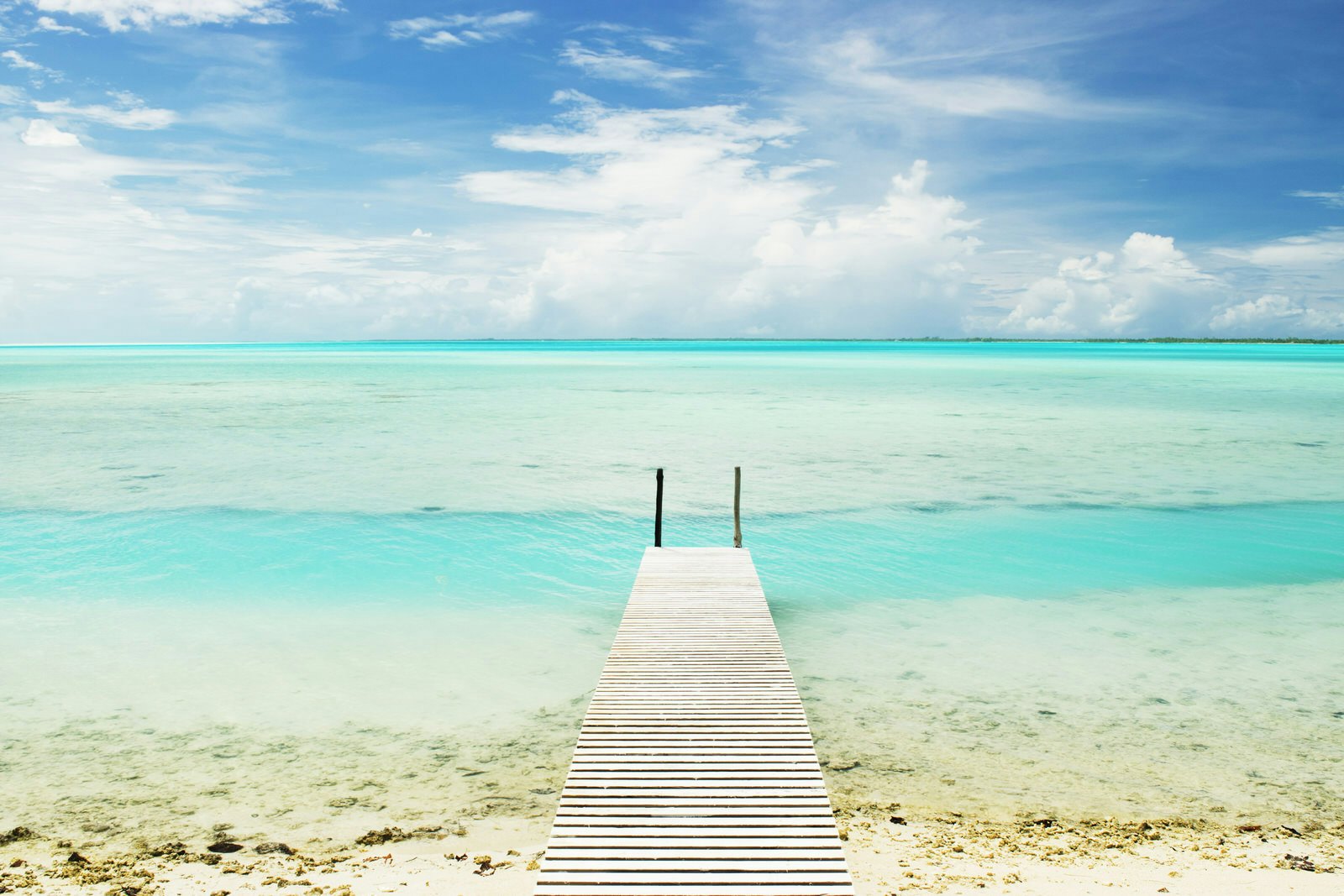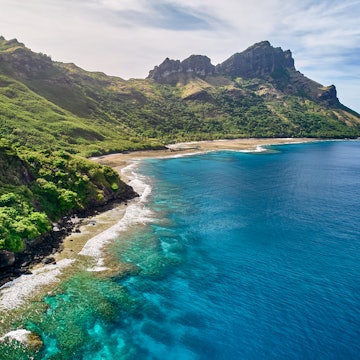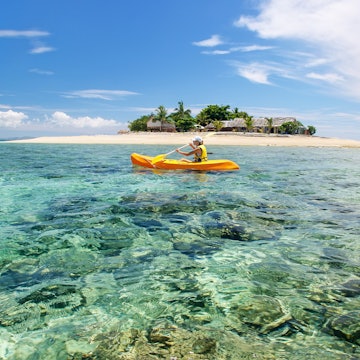

Anaa is an island paradise for those looking to travel off the beaten track. SageElyse / Shutterstock
One of the South Pacific's most incredible destinations is the quiet, unspoiled island of Anaa, part of French Polynesia. As the island begins opening for international visitors, take a look at the 'must do' activities Anaa has to offer.

French Polynesia is world famous as a stunning South Pacific paradise. Warm temperatures year-round, crystal clear waters, and supremely friendly hosts draw visitors from around the globe.
But the glamorous hotels of Tahiti and Bora Bora might not be for everyone. For environmentally-minded tourists keen to travel sustainably and see the authentic French Polynesia – and perhaps keen to support some worthy projects in the process – the heavenly island of Anaa should be top of your list.
Three hundred miles east of Tahiti, in the middle of The Tuamotus (an archipelago covering an area as wide as Western Europe) the Anaa atoll can be reached via a short, weekly Air Tahiti flight on from Pape'ete. Only a handful of international visitors make the journey each year, meaning they have much of the island (and the glorious tropical scenery) to themselves. Here's our guide to the many activities awaiting ecotourists in this beautiful slice of paradise.
Sustainable fishing
Anaa aspires to lead the world in the long-term sustainability of fly fishing. International tour operator Fly Odyssey organises regular community-led trips to the island during the main fly fishing season, during the dry months of April to December. This gives fishing enthusiasts a week to get their hooks into the hugely popular bonefish (known locally as kiokio). This ecotourism sustainability initiative helps support the local community, funding local conservation and environmental school programmes, and providing monetary value to the prosperity of the bonefish, ensuring its long-term survival.
Non-anglers can visit the 'marine educational area' that the local school created in a channel between the islands. Here, a ring of stones around an altar (a small sacred monument known traditionally as a marae) symbolises the annual issuing of a rahui – an ancient cultural order that makes it taboo to fish during the prime spawning season in March, April and May. As the fish population duly rebounds, it creates a sustainable food supply for local people long-term, and creates the bountiful schools of bonefish that ensures visiting fishing folk are sure to catch plenty of bites.
Cultural tours of Anaa
Sea-voyaging Polynesians knew about these islands for generations, settling here around 1400. French colonists weren't far behind, arriving around the 17th century, then Catholic missionaries set foot on Anaa's shores, converting the local population and building churches.
Yet in recent years the island's population has dwindled, from around 2000 people in 1960 down to approximately 500 residents today, primarily in the central village of Tuuhora. The outcome is that, of the seven ancestral villages around the lagoon – such as Tematahoa, Otepipi, and Temarie – most are now all but abandoned, with only short-term, seasonal inhabitants.
Visitors are invited to explore these ghost towns, complete with empty homes, old town halls, and crumbling temples. There are also historical odd spots worth visiting around the islands, such as the underwater cave known as Te Faitiga, a hideout masked by intimidating rocks, vital for people taking shelter during the Putuahara rebellion of 1852.
Take a marine safari
Local fishing boats can be hired for day safaris to explore the lagoon inside the Anaa atoll, including colourful coral reefs and shallow sandy waters. The lagoon is abundant in marine life, including red snapper, black giant trevallies, and plentiful species of reef fish. Jump into the turquoise waters and swim with docile blacktip reef sharks. Snorkel through the rocky terrain of the outer reef, and admire the variety of species that inhabit this environment. If you can arrange for a boat to travel outside the lagoon, the open ocean inhabits many larger marine creatures waiting to be spotted, such as sea turtles, dolphins, rays, and even the occasional whale shark. Tours around the small isles of Ioana feo also make it possible to see nesting seabirds.
While many popular reefs and archaeological relics can only be reached by boat, it is also possible to hire bikes from the various guesthouses and do some self-guided exploring on two wheels around coastal paths and inland trails.
Anaa's traditional crafts
Anaa’s community is rich in artisans, with local materials being utilised to create a huge range of products and souvenirs. This includes practical items for the purpose of fishing, such as bespoke hooks handmade by local craftspeople that are perfect for Anaa's shallow waters and designed to mimic the favoured prey of the bonefish and other species targeted in the lagoon.
There are the elaborate shell necklaces presented to all departing passengers at the airport, as well as ceremonial crowns made of tiny shells. Dried banana leaves are turned into everything from handbags to passport covers, and fabrics are dyed to create patterns capturing traditional island motifs. Carved stones, mined from the centre of the island, are turned into beautiful jewellery and sculptures, and an abundance of items are produced using the millions of coconuts grown and harvested around Anaa, from confectionery to scented oils.
More info: island life logistics
For board, consider Kanapa Lodge for an immersive experience in the middle of town, or Toku Kaiga to wake to a beautiful view across the lagoon. If you want to sample the real island vibe, consider staying with a local family at pension Flo Turquoise – guests get their own sleeping quarters, but otherwise share facilities with the family and get to experience their daily lives first hand. Either half board or full board, all these options give an opportunity to sample local dishes and traditional ingredients. Finally, if you make friends with the right people and ask the right questions, there is always the opportunity to spend a night on one of Anaa's private islands (called motu), depending on the weather.
Being part of French Polynesia, French is the island's official language, so Francophone speakers will be very comfortable (although English is an acceptable back-up among some residents). But be sure to also try pick up some Paumotu, the language of the Tuamotos.













